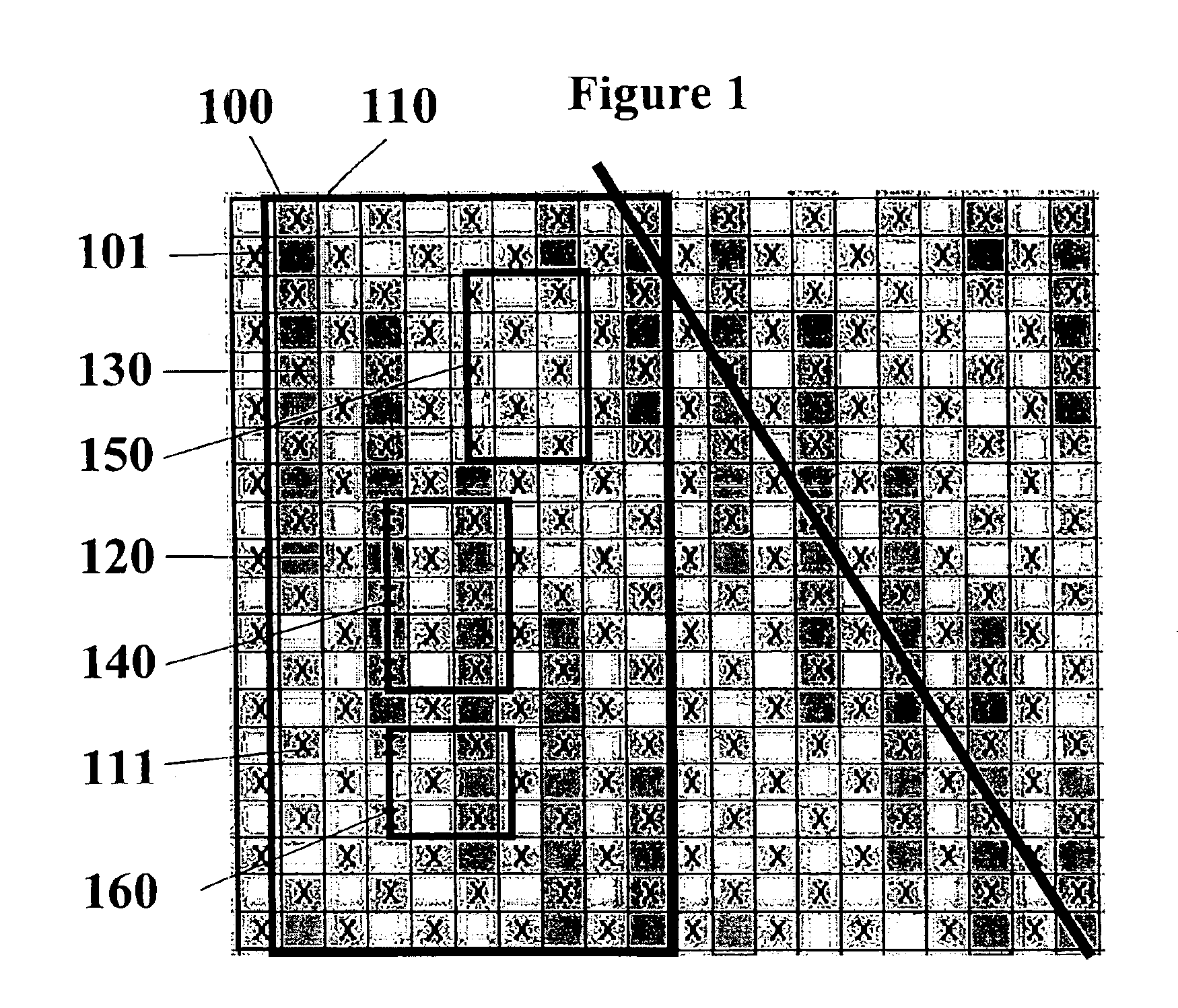Paired warp triple layer forming fabrics with optimum sheet building characteristics
a technology of building characteristics and paired warps, applied in the field of papermaking arts, can solve the problems of short fabric life, inability to spread the crossover points far enough apart to eliminate this strong topographical defect, and poor paper quality and machine efficiency, so as to reduce the drainage and topographical markings, reduce the cost, and reduce the complexity of the loom
- Summary
- Abstract
- Description
- Claims
- Application Information
AI Technical Summary
Benefits of technology
Problems solved by technology
Method used
Image
Examples
Embodiment Construction
[0037]To counter the strong diagonal crossover pattern 310 exhibited by the fabrics taught in the Johansson patent shown in FIG. 3, the present invention weaves a second MD yarn pair between the crossing pairs to spread the crossover points. At least one of the yarns in this second pair will be part of the forming side weave pattern. These additional yarns result in a second warp system and the resulting fabric structure becomes a triple layer. The crossing pairs now make up binding yarns that bind the top and bottom sides together and are an integral part of the topside weave. To add necessary MD tensile strength a third warp system is added below the second warp system. This third warp system makes up the wear-side of the cloth with the crossing pairs either binding the wear-side or acting as an integral part of this bottom side weave.
[0038]FIG. 1 shows an example of a forming side (FS) plan view of a paired warp fabric in a satin crossover arrangement with left and right warp yar...
PUM
| Property | Measurement | Unit |
|---|---|---|
| MD cell lengths | aaaaa | aaaaa |
| heat- | aaaaa | aaaaa |
| compressive forces | aaaaa | aaaaa |
Abstract
Description
Claims
Application Information
 Login to View More
Login to View More - R&D
- Intellectual Property
- Life Sciences
- Materials
- Tech Scout
- Unparalleled Data Quality
- Higher Quality Content
- 60% Fewer Hallucinations
Browse by: Latest US Patents, China's latest patents, Technical Efficacy Thesaurus, Application Domain, Technology Topic, Popular Technical Reports.
© 2025 PatSnap. All rights reserved.Legal|Privacy policy|Modern Slavery Act Transparency Statement|Sitemap|About US| Contact US: help@patsnap.com



